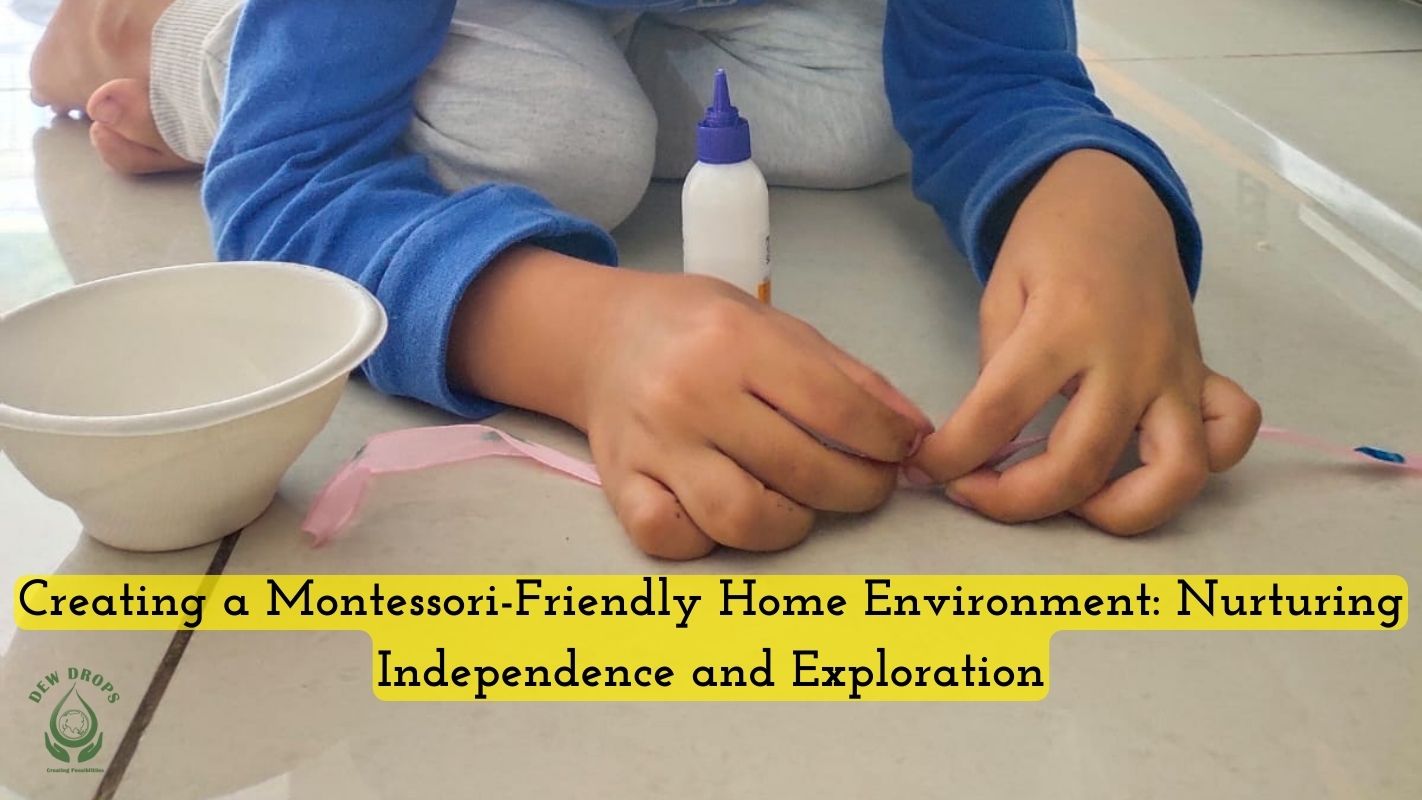Creating a Montessori-Friendly Home Environment: Nurturing Independence and Exploration
Bringing the principles of Montessori education into your home environment can have a profound impact on your child’s development. By creating a Montessori-friendly space, you can foster independence, curiosity, and a love for learning. In this blog, we will explore practical tips and ideas to help you establish a nurturing and engaging Montessori-inspired home environment.
Encourage Freedom of Movement:
A key aspect of Montessori education is allowing children to move freely and explore their surroundings. Clear pathways and remove obstacles to facilitate your child’s movement. Provide low shelves or open storage units where they can independently access materials and books.
Promote Order and Organization:
Maintaining an orderly and organized home environment is essential. Assign a specific place for each item, using labeled baskets or bins to categorize toys, books, and materials. This helps your child develop a sense of responsibility and encourages tidying up after play.
Create a Prepared Environment:
Designate specific areas or learning corners within your home. A reading nook with a comfortable chair and a bookshelf, an art station with child-friendly art supplies, or a nature exploration area with plants and magnifying glasses are just a few possibilities. Ensure that materials and activities are within reach, inviting your child to engage independently.
Incorporate Natural Materials:
Opt for toys, furniture, and materials made from natural elements like wood, cloth, and metal. These materials offer sensory experiences and a connection to the natural world. Avoid plastic and battery-operated toys, which can limit creativity and engagement.
Foster Independence:
Arrange your home to support your child’s independence. Incorporate child-sized furniture, such as low tables and chairs, allowing them to complete tasks like eating or art activities without constant adult assistance. Install a low-hanging clothes rack or hooks at their height, enabling them to hang their own coats and bags.
Support Practical Life Skills:
Integrate practical life activities into your home environment. Create a child-friendly kitchen area equipped with safe utensils and dishes, enabling your child to participate in food preparation and cleaning. Provide child-sized cleaning tools, like a small broom and dustpan, for them to contribute to household chores.
Emphasize Nature and Outdoor Exploration:
Nurture a connection with nature by incorporating natural elements into your home. Introduce indoor plants, maximize natural light, and use natural materials in decor. Spend ample time outdoors, whether in your backyard, a nearby park, or during nature walks, to foster a sense of wonder, exploration, and appreciation for the natural world.
Limit Screen Time:
Create a screen-free environment to the extent possible. Minimize the use of screens, such as TVs, computers, tablets, and smartphones, especially during your child’s play and learning time. Instead, encourage hands-on activities, imaginative play, and social interaction.
Follow Your Child’s Interests:
Observe and understand your child’s interests, preferences, and developmental needs. Adapt your home environment to reflect their interests and passions. Whether it’s setting up a mini-garden, creating an art corner, or incorporating a sensory bin, tailor the environment to ignite their curiosity and enthusiasm.
Cultivate a Calm and Peaceful Atmosphere:
Establish a calm and peaceful atmosphere at home. Create reading corners, use soft lighting, play soothing music, and establish daily routines to provide a sense of security and predictability for your child. A serene environment enhances focus, relaxation, and overall well-being.
Conclusion:
By creating a Montessori-friendly home environment, you lay the foundation for your child’s independence, exploration, and love for learning. Encouraging freedom of movement, promoting order and organization, creating a prepared environment, incorporating natural materials, fostering independence, supporting practical life skills, emphasizing nature and outdoor exploration, limiting screen time, following your child’s interests, and cultivating a calm atmosphere all contribute to a rich and nurturing space for your child to thrive. Embrace the principles of Montessori education in your home, and witness the joy and growth that unfolds in your child’s life.

